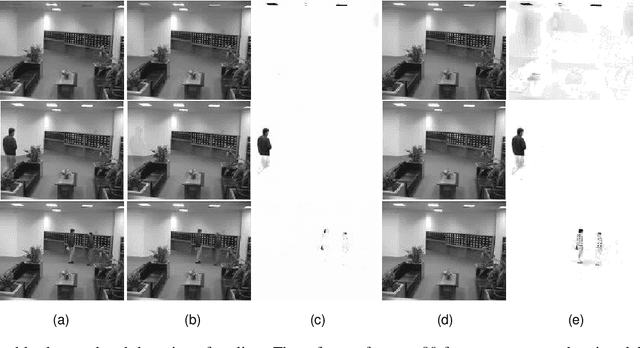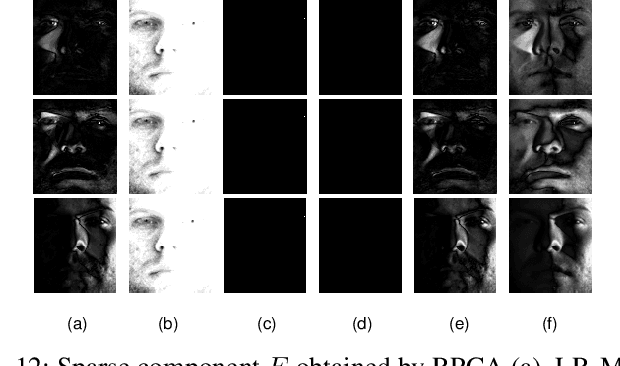Lina Xian
Low-Rank Matrix Recovery from Noisy via an MDL Framework-based Atomic Norm
Sep 17, 2020



Abstract:The recovery of the underlying low-rank structure of clean data corrupted with sparse noise/outliers is attracting increasing interest. However, in many low-level vision problems, the exact target rank of the underlying structure, the particular locations and values of the sparse outliers are not known. Thus, the conventional methods can not separate the low-rank and sparse components completely, especially gross outliers or deficient observations. Therefore, in this study, we employ the Minimum Description Length (MDL) principle and atomic norm for low-rank matrix recovery to overcome these limitations. First, we employ the atomic norm to find all the candidate atoms of low-rank and sparse terms, and then we minimize the description length of the model in order to select the appropriate atoms of low-rank and the sparse matrix, respectively. Our experimental analyses show that the proposed approach can obtain a higher success rate than the state-of-the-art methods even when the number of observations is limited or the corruption ratio is high. Experimental results about synthetic data and real sensing applications (high dynamic range imaging, background modeling, removing shadows and specularities) demonstrate the effectiveness, robustness and efficiency of the proposed method.
 Add to Chrome
Add to Chrome Add to Firefox
Add to Firefox Add to Edge
Add to Edge